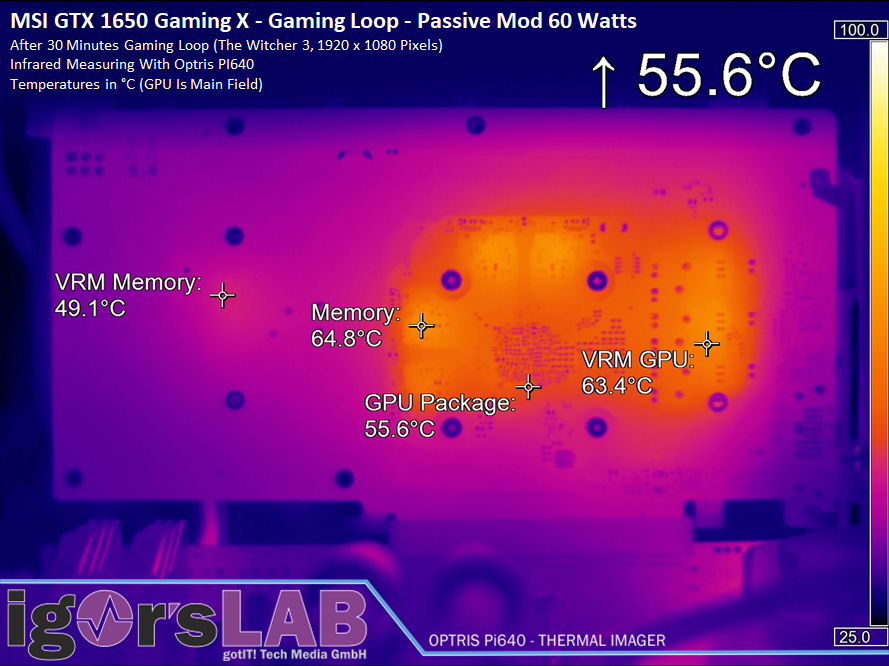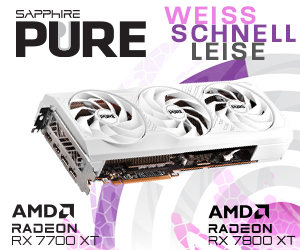Two profiles, two philosophies
While I set the power target to 53 percent with the 60-watt profile and also tried to minimize the voltages further, I had to do without a serious change of the voltage curves with the 47-watt profile. Because what still looked stable in terms of values (and also ran) caused severe "visual damage", especially with regard to the variances. Even though the frametimes still looked quite good at first glance, the Unevenness index and the evaluation of the variances at the end showed me exactly what my eyes had already noticed in the game – it often seemed rough and unrounded, even if FPS and Frametimes still reasonably fit. Not even G-Sync helped.
With average voltages of approx. 0.875 volts in the 60-watt profile and even only 0.775 volts in the 47-watt profile, you really have reached the lower limit of where Turing still acts sensibly. The power consumption values of the profiles and the original card used below refer to the long-term measurements and the average values obtained for the entire runtime.

With the clock, it looks really pleasing, even if the lower values for the power target cause the boost frequencies to fluctuate more. With just under 79 percent of the power consumption in the 60-watt profile, you still achieve almost 92 percent of the average boost cycle! In the 47-watt profile, the costs are then approx. 62% of the power consumption still almost 84 percent of the original boost! This gives me hope for the benchmarks at this point, because with only 47 watts of power to beat a GeForce GTX 1050 Ti with its 68 watts, it will certainly be very interesting.

The minimized load is of course clearly noticeable thermally, whereby the Already badly old Arctic Accelero S1 Plus really still has to certify a very good performance today. It is hard to build such a part for this price much better. And so the GPU in the 60-watt profile is hardly hotter in the end than under full irrigation from MSI's energy flood system on the OC card. The more economical profile is then a class cooler.

The picture shows us the measurement setup with the Accelero S1 Plus, as well as a black spot with measuring varnish for the counter-test of the heatpipes and the special custom riser card for the recording of the power consumption values. You can start with something and measure it properly. Especially since I brushed the board again with transparent measuring varnish and known emission level.
We see in 47-watt mode that none of the components even comes close to the thermal limits. RAM, VRM and even the underside of the GPU's BGA are deep-green cool and without any heat stress. Real hotspots? No!

This is hardly different with the 60-watt profile, even if the GPU is now around 5 degrees and their VRM by approx. 7 degrees. The memory will be 3 degrees warmer, but is still a long way from the thermal upper limit. This is also the reason why I wrote earlier that it could be operated without a cooler, even if with a slightly lower speed for safety reasons. But it's easy.

Intermediate conclusion on cooling performance
This would prove that it would be possible to offer such graphics cards with the TU117-300 as passively cooled models ex works. However, it can be doubted that Nvidia's Base Design Kit allows such cooling variants and different form factors at all. The chip manufacturer is now really restrictive in terms of requirements for board partners and in the end justifies this with a kind of quality promise. Of course, you can see this one way or the other, depending on your preference for such exotics.
Passive conversion is therefore generally very possible, but it is also important to overcome the technical hurdles in practical implementation. And that's where this article should be a little help and inspiration. However, we can see on the next page to what extent these austerity measures leave their mark on gaming performance.



































Kommentieren